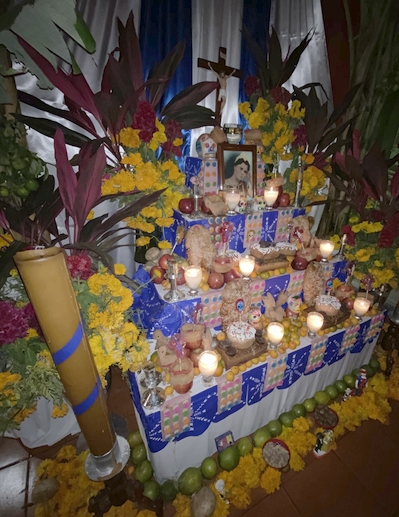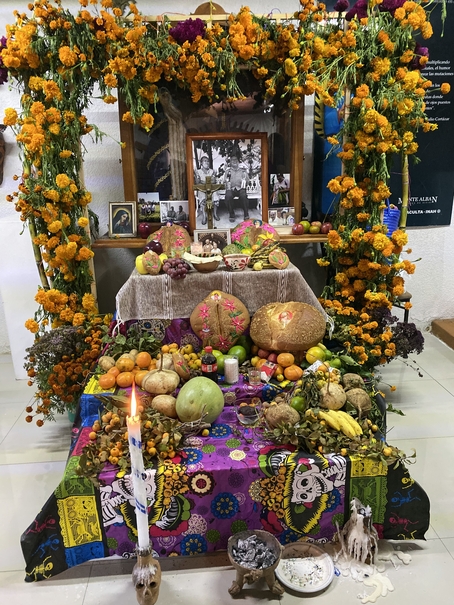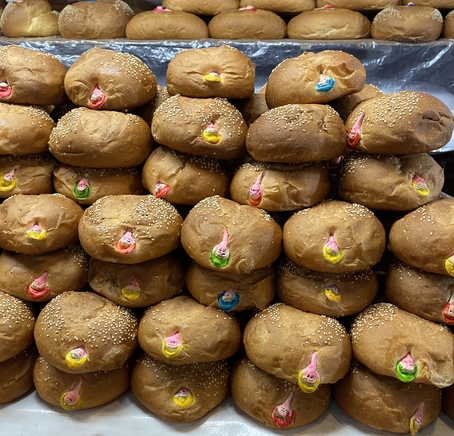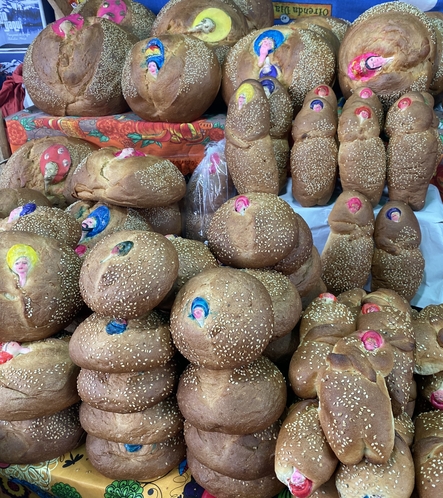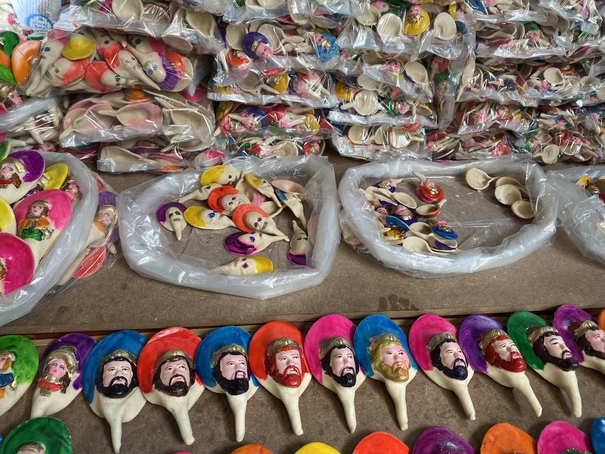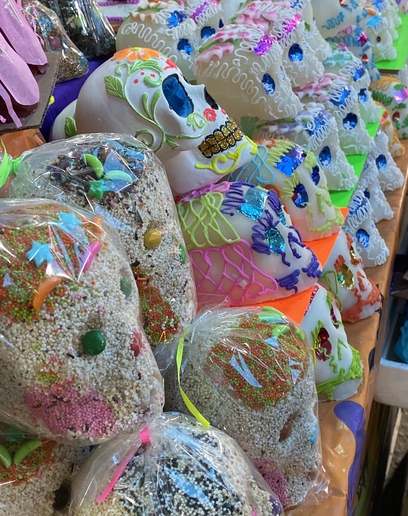Día de Muertos in Oaxaca
Altars
Page Outline
What’s Going On
Like American Christmas trees, a Mexican Día de Muertos altar is considered to be traditional and at the same time open to innovation.
- Among Nahuatl-speaking immigrants into northern Baja California, a person who dies violently (as in an auto accident or a gunfight) has a separate altar outside the house. Oaxacans I spoke with never heard of that.
- In some regions, the altar includes a small dog statue as a spirit guide in the next world. (That is probably why Miguel’s dog was named Dante in the Pixar film “Coco.”) Oaxacans don’t station dogs beside their altars.
- Although sugar skulls (and amaranth skulls) are available in the market, the universal representation of the dead in Oaxaca, aside from photos, is pan de muertos.
- Although in some regions of Mexico, the bread itself is configured as a little person (who tends to look like a voodoo doll), here it is usually a blob-shaped or oblong loaf with a small face bought from the market and installed on it. Some of these faces have crowns to show the dead were hotshots.
- In most regions it is common to lead the dead to the altar with a trail of orange or yellow flowers. In Oaxaca this trail is often supplemented or replaced by a “sand painting” on the floor in front of the altar.
On this page you get some pictures of altars, mainly from family shops, and a few pictures of provisions for them sold in markets.
Miscellaneous Altars
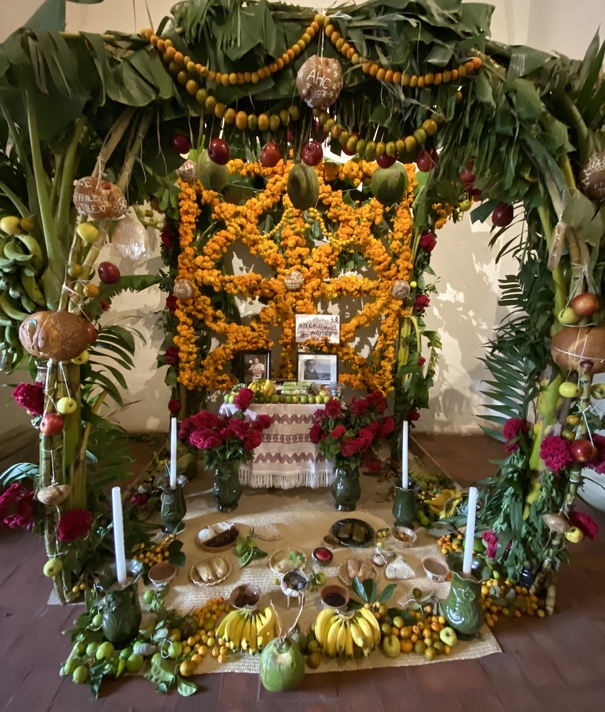
If the available table is small, some offerings may be set on the floor.
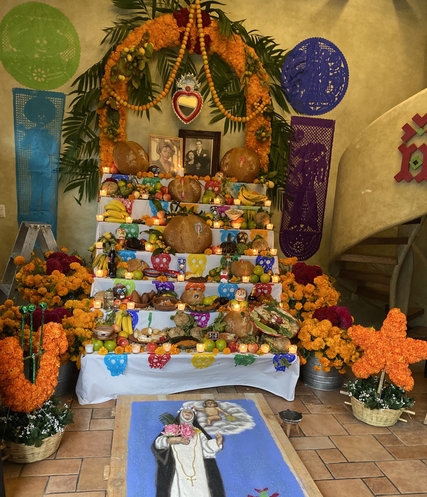
Often the floor is used for further decoration.
Return to top.
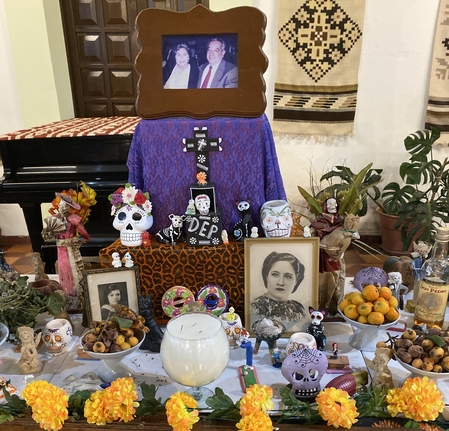
Today it is rare to see an altar without a photograph of the honored deceased.
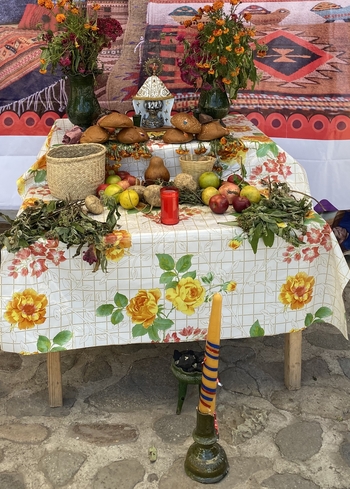
The object under the table is a green ceramic incense burner of a pre-Columbian style.
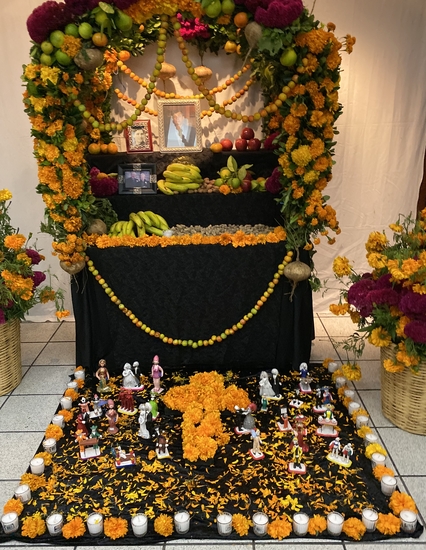
The Altar of My Hotel
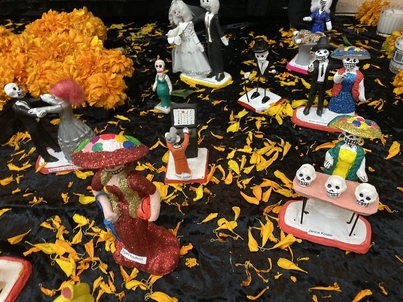
Tiny Figures of Hotel Guests as Skeletons. I’m the one in the middle standing at the video game console.
Return to top.
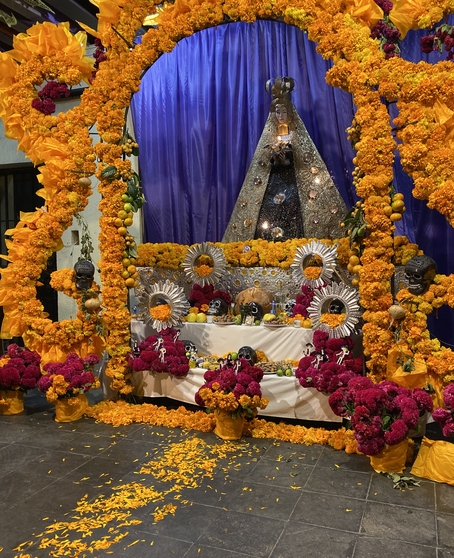 Restaurant Altar Before Permanent Statue of Nuestra Señora de la Soledad (Patron of Oaxaca), with Lead-in Flower Trail
Restaurant Altar Before Permanent Statue of Nuestra Señora de la Soledad (Patron of Oaxaca), with Lead-in Flower Trail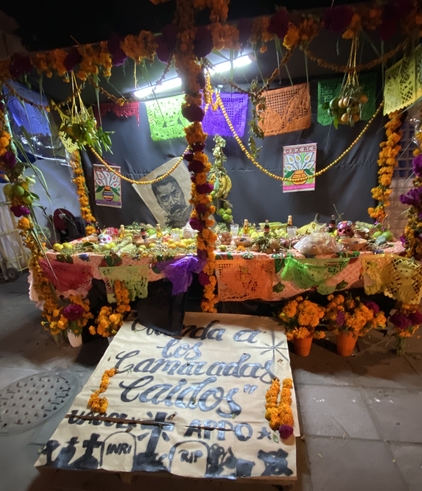 Alter to the Martyrs of a Cantankerous Minority Political Party
Alter to the Martyrs of a Cantankerous Minority Political Party
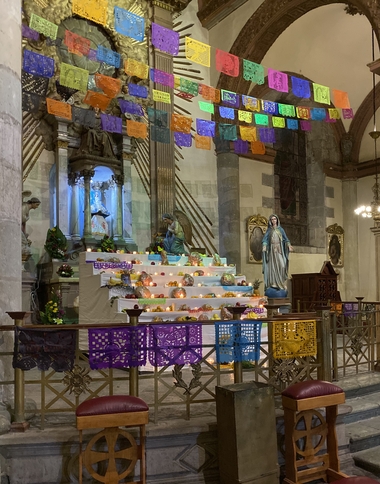 Congregational Altar Inside Oaxaca Cathedral
Congregational Altar Inside Oaxaca Cathedral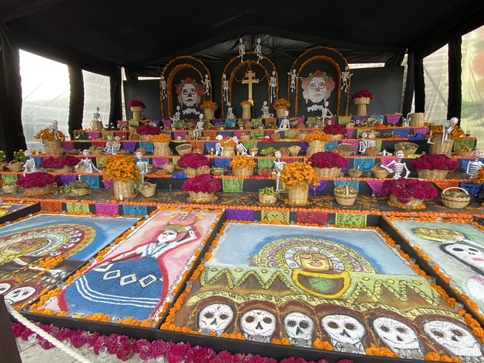 Congregational Altar Outside Soledad Church
Congregational Altar Outside Soledad Church
Return to top.
The Edible Dead
Each dead person honored on an altar is also represented by a loaf of bread and/or a sugar or amaranth skull, although in Oaxaca living family members can also be represented this way.
Merchants happily sell you bread to represent family members, but if you want to bake your own, you can also buy pre-fab heads to put on each loaf. The male heads in the foreground have crowns in case your dead seem in retrospect to be more kingly than you remembered.

Sugar skulls seem to be taken more seriously further north. In Oaxaca they take second place to bread or even to amaranth skulls. On the other hand, they tend to be more heavily decorated. The central, blue-eyed one separating the sugar ones from the amaranth ones in the picture at left is made of something else. (Plaster?)
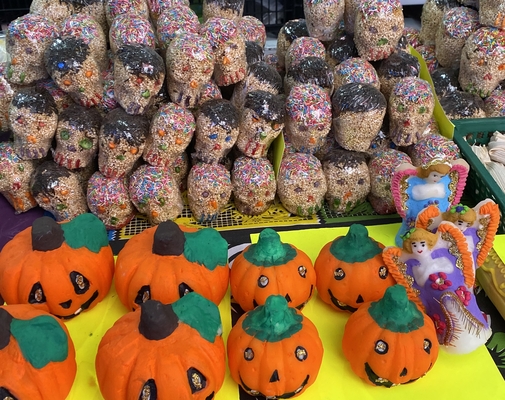
Candy pumpkins are American, but if it is okay to represent the dear departed with an amaranth skull, why not with a candy pumpkin?
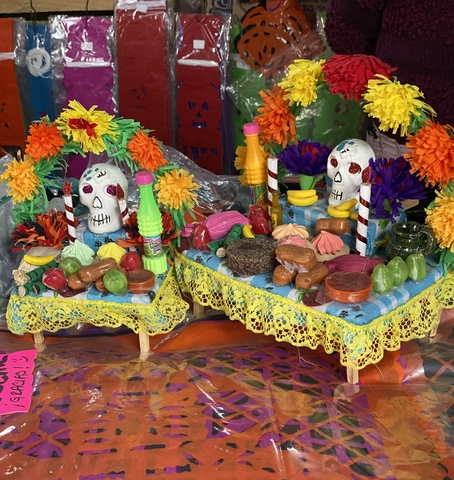
Some merchants sell little models of family altars for use on family altars. Meta-altars?
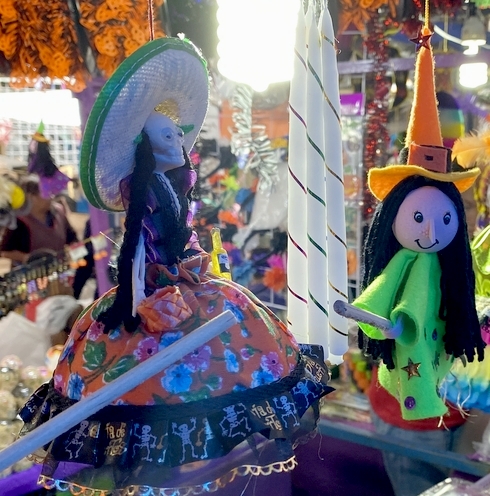
Halloween witches are a popular American import and contrast with the dancing skeletons of Mexican tradition.
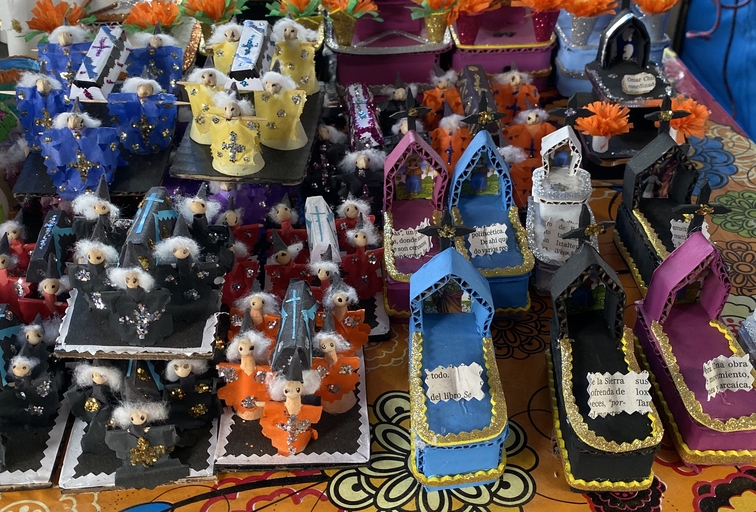
Little coffins are frequent on altars, but pointy-hatted witches carrying them seem pretty syncretistic.
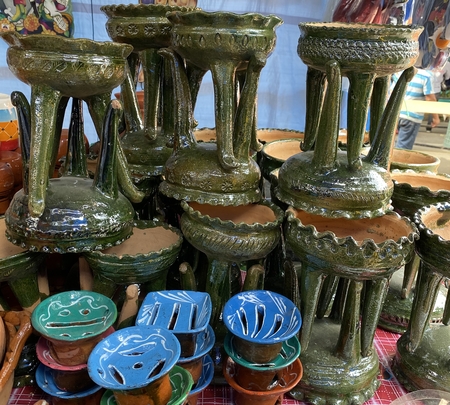
Censers. As in China, spirits are attracted to the smell of incense. For classy spirits, you need classy incense, but there are not all that many kinds of incense, so nobody presses the point.
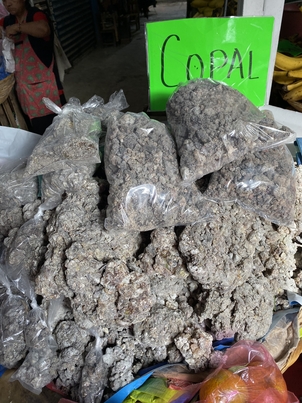
Copal to burn in the censers. Chinese altars smell of burning sandalwood; Mexican altars smell of burning copal. Sandalwood smells better but the spirits it attracts don’t speak Zapotec.
Return to top.
Background Design: Artisanal Paper, Francisco Toledo
